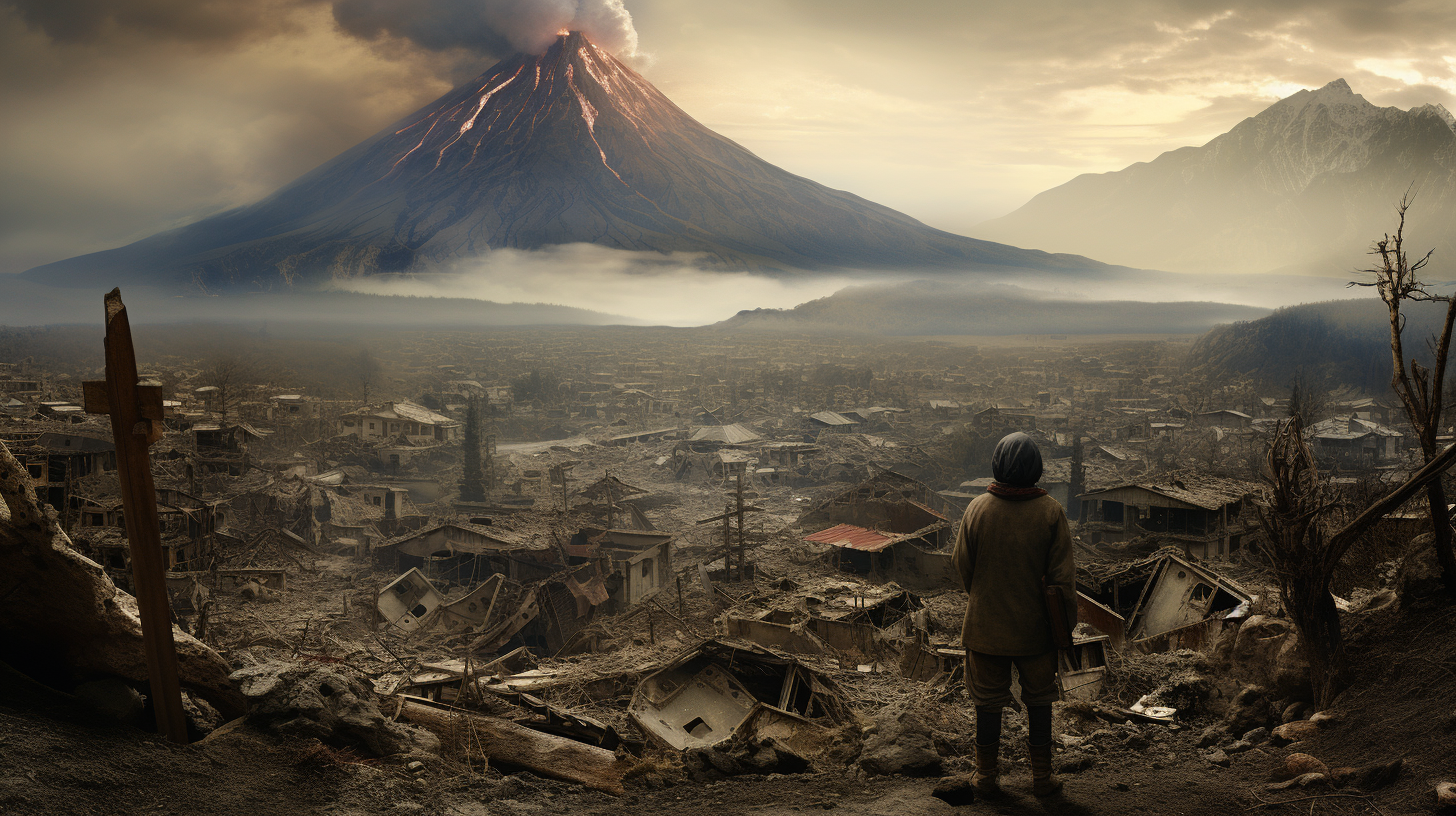Amid a bleak expanse, where once towered forests now stand skeletal trees, and rivers of vibrant life have turned to streams of ash, there reside the hardy souls of mountaintop communities. Life in their world, a dystopian canvas painted by relentless volcanic activity and human environmental neglect, is the chronicle of an existence defined by resilience and stark ingenuity. In the shadow of once dormant giants, these inhabitants sculpt a reality that feasts on the morsels of hope that survive in a world seemingly bereft of redemption.
Survival in a Monochrome World
Unlike the ancient cultures swallowed by volcanic fury referenced in our last discourse, these communities remain, steadfast, crafting a life within the confines of what many would deem inhospitable, if not impossible. It is a testament to the untameable human spirit that strives even when the skies grow dark and the earth beneath roars with unfathomable rage.
Their dwellings, sturdily constructed from the very ash that threatens to erase their existence, reflect a sobering adaptation to the environment. With architecture that feels both primeval and futurist, homes are insulated against the ambient acidity and tremors that are now a part of the mundane. Fields that once bore bountiful harvests, have been ingeniously re-purposed to cultivate crops that thrive in sulfur-rich soils, a rebellion against the sterility of the land.
Community and Culture in Crisis
As was hauntingly documented with the Ainu and their whispers of culture erased by the ash, the mountaintop communities too, wrestle with the specter of cultural attrition. Yet, in this constant twilight, folklore and tradition are fiercely guarded. Storytelling, vivid as the once verdant valleys, continues to impart lessons of the past and warnings for the future. Local artists craft sculptures from lava stone, an act not merely of creation but of reclamation – a bold declaration that beauty can emerge from devastation.
Adaptation Over Despair
The ingenuity of survival extends to the realms of technology and resource management. Microgrid technologies harness geothermal energy, the very force that rends their world asunder also keeps the hearths warm and powers the dim lights that pierce the eternal dusk. Water filtration systems have become as commonplace as the protective masks that hang by every door, repurposing the rain that washes through the ash-laden clouds.
Theirs is not a life of ease; every breath is a reminder of the ubiquitous volcanic dust, a near-invisible invader in their lungs and livelihood. And though greenery is scarce, patches of determined flora cling to life in sheltered crannies, cultivated by the loving hands of those who refuse to surrender their world to a seemingly inevitable gray.
Staring Into the Future
The communities of the ash live with the dichotomy of embracing their past and the need to pioneer an uncertain future. They do not labor under the illusion that the world will return to the halcyon days of old but rather push forward, adapting to a transformative and often hostile world. Their existence is a canvas upon which is etched a stark warning – one that illustrates the consequence of environmental disregard and the incalculable value of human adaptability and resolve.
As we ponder these existences etched in shadow and survival, we are compelled to reflect on the precarity of our global state. Within these tales of adaptation lies the unspoken query – if heed is not taken, what other communities will find themselves carving life out of ash? What parts of our richly woven cultural tapestry will fray and fade as the landscapes around us morph under the strain of an ailing planet?
Perhaps among the embers and the ash, insights can be gleaned not just for survival, but for the awakening needed to steer away from this precipice, to avoid further entries into the annals of cultures consumed by the ravenous maw of disaster. Yet for the mountaintop dwellers, life persists, a stern emblem of what may await us all should our collective endeavors falter in the face of environmental calamity.
